
Impact Report 2023
Report from the Supported Organisations & Their Programs
(Also Progressive Report from Organisations Supported from 2022)
We're thrilled to share that, with your support and generosity, we raised an incredible $1 million for ocean conservation in 2023. We're proud to say that every dollar raised was donated in full to these two incredible charities dedicated to protecting our oceans and the Great Barrier Reef. With your support, we've been able to make a tangible difference in the fight for a healthier, cleaner ocean. We're excited to provide you with this impact report to showcase the real impact your donations have made.
Report Date: 11 March 2024
It’s been a tough summer for our Reef. We know climate change is causing more frequent and severe extreme weather events, and this summer the Reef has experienced multiple cyclones, flash flooding, and now a marine heatwave is causing widespread coral bleaching. We’ve made significant progress in advancing methods to restore reefs damaged by the impacts of climate change, but coral reefs remain one of the most vulnerable ecosystems on the planet. Your continued support is critical as we accelerate our efforts to safeguard the Reef’s future.
The funds raised by The Sapphire Project 2023 have allowed the Great Barrier Reef Foundation to achieve remarkable milestones through their focused efforts on the Plant a Coral Campaign and Seagrass Restoration programs.
The possibility of losing seagrass habitats means losing the marine animals that depend on them for protection, food, and shelter. Without seagrass, we know that the dugongs and sea turtles that call our Reef home would not survive. Seagrass meadows also play an important role in removing carbon dioxide from our atmosphere. Known as carbon sinks, they act like enormous sponges, absorbing carbon and storing it internally. In fact, seagrass meadows can store carbon 30 to 50 times more effectively than tropical ecosystems.
The SeaGrow program, the world's first Traditional Owner-operated seagrass nursery along the Great Barrier Reef, has played a pivotal role in the large-scale restoration trial. Between July 2023 and January 2024, two Indigenous Sea Rangers, as part of their training, dedicated over 3000 hours to nursery and restoration operations, and the program has successfully collected 21,613 seagrass seeds with the support of 143 volunteers participating in 23 research and public events. Additionally, new knowledge about seagrass restoration has been shared through five new research publications shared at nine conference presentations.
Simultaneously, the impact of the investment towards Plant a Coral, facilitated by the Boats4Corals program, has been transformative. The Coral IVF method, employed as a routine, safe, and sustainable means of coral reef restoration, has seen substantial progress. Thanks to the initiative, 40 local stakeholders, including three Ngaro Traditional Owners, have been upskilled on the Coral IVF method, fostering community involvement and decision-making in the restoration process. The program has significantly increased coral spawn collection capacity and 290M coral larvae have been successfully deployed onto the Great Barrier Reef. The collaborative efforts of local tourism operators leading this initiative have not only advanced coral larval re-seeding but have also created a model for sustainable coral reef restoration with widespread impact and potential for future replication.
The Sapphire Project's generous support for SIMS's four innovative initiatives marks a transformative chapter in the conservation of our marine ecosystems. By addressing the urgent need to restore kelp forests, our efforts will not only rejuvenate these underwater rainforests but also revive the marine biodiversity that depends on them. The collaboration with the Gamay Rangers in employing traditional methods to manage urchin populations heralds a new era of combining ancestral wisdom with modern conservation techniques, potentially unlocking commercial avenues for urchin by-products and fostering sustainable practices.
The introduction of next-generation Living Seawalls, particularly the piling wraps, is set to redefine our interaction with marine infrastructure. By enhancing ecological diversity on wharf pilings, we're not just greening our harbors; we're actively contributing to a significant uplift in local biodiversity, mirroring the success of the living seawall tile initiative.
Our commitment to pollution action in Gamay (Botany Bay) underscores our dedication to environmental justice, ensuring that local Indigenous communities have access to clean water, essential for the continuation of traditional cultural practices. This pioneering research into the pollutants afflicting Gamay will pave the way for targeted conservation strategies, safeguarding both cultural heritage and marine life.
Lastly, our 'Turtles in Hot Water' project sheds light on the pressing issue of climate change, tracking the shifting patterns of sea turtle migration and habitat preference due to ocean warming. This critical data will inform conservation strategies, ensuring the resilience of these majestic creatures against the backdrop of a changing climate.
Together, these projects represent a beacon of hope for our fragile marine ecosystems, embodying a holistic approach to marine conservation that honours tradition, fosters biodiversity, and addresses the environmental challenges of our time.

Progressive Report from Organisations Supported from 2022
The Queensland Blue program explores the restoration of coastal wetlands and their carbon sink capacity across Queensland (QLD), focusing on the Great Barrier Reef (GBR) catchment. Thanks to funding from The Sapphire Project, our team is unravelling the local opportunities and social challenges of developing blue carbon restoration projects in the region.
Spatial Assessment: Exploring Local Opportunities
Key Outcomes:
A spatially explicit analysis of potential sites and opportunities for tidal restoration of mangroves, saltmarshes and supratidal forestes across QLD’s coastline
State-wide estimates for carbon abatement and co-benefits generated from the tidal restoration of QLD coastline
Three site-level pre-feasibility assessments for tidal restoration in Central Mackay and Wet Tropics
Next Steps:
Continue to develop feasibility assessments at the level of individual properties
Trials of Melaleuca (supratidal forest) restoration at a QLD study site)
Landholder Assessment: Understanding Social Challenges
Key Outcomes:
Hiring of a social scientist and development of survey research to understand landholder amenability to tidal restoration
Online discussions with diverse QLD stakeholders (eg. Cane Growers, QLD Farmers’ Federation) on the appetite for blue carbon projects
Investigate local landholder interest in blue carbon restoration projects in the Mackay/Whitsunday region
Next Steps:
Deliver a public mapped-based survey to understand stakeholder perceptions on mangrove restoration in the Wet tropics
Support the delivery of landholder amenability surveys to blue carbon projects in QLD
Findings Snapshot
51,700 ha of blue carbon ecosystems
- across 1,391 QLD properties - could be restored via tidal reinstatement
115,596 tonnes CO₂e yr⁻¹ is the carbon sequestration potential from tidal reinstatement along QLD’s coastline
Little amenability of landholders within the Mackay/Whitsunday region to the implementation of tidal restoration on their properties
It has now been 18 months since the 2022 edition of Sapphire Dinner. The funding received from the Sapphire Project has helped Citizens of the Great Barrier Reef to deliver both extended marine operations and technological development for our analysis engagement platform involving school students in Australia and citizen scientists across the world for our third annual Great Reef Census in 2022/23.
In early 2023, we reported on the incredible results of our marine operations for Great Reef Census 3 (GRC3), having surveyed 3,230 sites across more than 510 individual reefs, generating more than 75,000 images.
Following the Sapphire Project’s support, we turned to approach the in-water portion of operations for Great Reef Census 4 (GRC4) in September 2023. Off the back of the success of GRC3 our ambition remained to expand the Great Reef Census to more priority reefs across the 2,300 km stretch of the GBR and to solidify the science and conservation impact of the program.
With marine operations concluding on GRC4 at the end of January 2024, we are pleased to have delivered on this ambition. To date the Great Reef Census has now surveyed an unparalleled 4,690 sites across more than 586 individual reefs, generating close to 110,000 images, adding to our broadscale reconnaissance picture of the Great Barrier Reef - one of the largest ever.
The reefs surveyed to date now stand equivalent to 17% of all reefs within the Great Barrier Reef Marine Park. Before the Great Reef Census, as little as 5% of reefs were regularly surveyed.
The Great Reef Census remains one of the world’s largest marine surveys in both data collected and the geographical scale of its operations.
As we now work towards launching our global citizen analysis campaign, we are looking to exceed last year's results of 160,000 analyses from thousands of people across 70 countries worldwide in our campaign to donate screen time to the Reef.
In the 2023 citizen analysis campaign, the evolution of our unique hybrid analysis model combining the human eye with AI has taken our data to within 97.49% accuracy of experts following the citizen scientist analysis.
Our virtual volunteering program hosted on the GRC platform has been adopted by schools across the globe, and some of the world’s largest brands and organisations. GRC4 analysis will go live in March 2024.
“The Great Reef Census collects information that is helping to inform decisions on where to direct boats for control of crown-of-thorns starfish (COTS). COTS outbreaks are impacting reefs across the GBR and this year the Census will be targeting reefs that are blindspots within the control program to gather critical survey data and to help us manage this threat across the reef.”
Roger Beeden
Director of Reef Interventions at Great Barrier Reef Marine Park Authority
“The Great Reef Census has been central to identifying ‘key source reefs’ — reefs which release large numbers of larvae during the annual mass spawning and play an important role in helping their neighbours recover from damage. The Census is improving our ability to locate these important sources of coral recovery quickly, so we can better target their resources and ultimately, advance conservation outcomes for the Reef.”
Professor Peter Mumby
University of Queensland Marine Spatial Ecology
As we begin 2024 we are beginning our rollout of the Great Reef Census program to other reefs and communities around the world and searching for investment and resources to bring this vision to life.
LIRRF sincerely appreciates the generous support from the Sapphire Project. The Australian Museum’s Lizard Island Research Station (LIRS) is widely acknowledged as one of the best coral reef field research stations in the world. LIRRF is a major supporter of research at LIRS and raises funds for the following:
The award of up to four doctoral and four post-doctoral research fellowships each year. The fellowship funding covers the costs of doing field research at LIRS.
Critical research grants for important time-critical research for which there is no other source of ready funding. These grants cover the cost of field research at LIRS.
The acquisition and maintenance of most buildings and equipment at LIRS including the solar power facility that now supplies 96% of electricity to LIRS.
$243,200 has been received from the Sapphire Project in 2022. LIRRF has applied this funding as follows:
Research fellowships $127,472
Crown of Thorns Starfish research $23,000
Research dinghies maintenance $29,983
Microscope maintenance $3,950
Replace the roof on one of the staff houses $25,000
Install cyclone-rated screws on the roofs of several research buildings $33,815
Research Fellowships
This funding enables the fellows to conduct field research at LIRS. About 100 research projects are conducted at LIRS each year and the research output is equivalent to that of a medium-sized university school. Since 2006, almost 1,600 scientific publications based on research at LIRS have been received in the library. The fellowship recipients are major contributors to the scientific output – about 16% of the scientific publications are from their work.
The focus of the research is what happens to reefs under stress. The objective is to gain knowledge that will help the management and recovery of the Great Barrier Reef.
The fellowships to conduct field research at LIRS are unique and fellows enjoy significant personal growth through conducting their fellowship research.
It allows fellows to learn practical competence to work underwater.
For most, it is the first time they have been responsible for managing a research grant, for recruiting and managing research assistants, for arranging travel, and the many logistical requirements of undertaking research at LIRS.
They complete their fellowship with not just publications but with practical field research capabilities, a capacity to undertake research work independently, to begin to assume some leadership capacity, and with significantly greater confidence.
The egalitarian and collegiate environment at the LIRS helps them begin to feel an integral part of the body of coral reef research scientists and future research collaborations often result.
Crown of Thorns Starfish (COTS) Research
Periodic outbreaks of COTS on the GBR devastate the coral as COTS eat the coral. The research funded from this Sapphire grant continued extensive research into COTS conducted at LIRS via a $500,000 grant from The Ian Potter Foundation. Research at LIRS has discovered new cost-effective methods of controlling COTS and has developed new methods of detecting the early stages of an outbreak so that action can be taken to minimize the impact.
Research Infrastructure at LIRS
LIRS has a reputation as a place where things can be relied upon to work. This is only achieved by constant attention to the maintenance and replacement of infrastructure and equipment.
$92,748 of the Sapphire funding has been applied to this maintenance.
There are twelve research dinghies and three larger boats. Motors and equipment are replaced on a regular basis.
All microscopes are professionally serviced each year.
Coles House, one of the two staff houses, was constructed 25 years ago and the extremely corrosive atmosphere at Lizard Island has damaged the roof to the point where it needed to be replaced.
The frequency and intensity of cyclones have increased in the last decade. Category 4 cyclones made direct hits on LIRS in 2014 and 2015. A cyclone shelter capable of withstanding any cyclone was constructed in 2016 with funding from LIRRF. Sapphire funding facilitated the installation of cyclone-rated screws on the roofs of research buildings as another step to ensure that LIRS survives future cyclones.
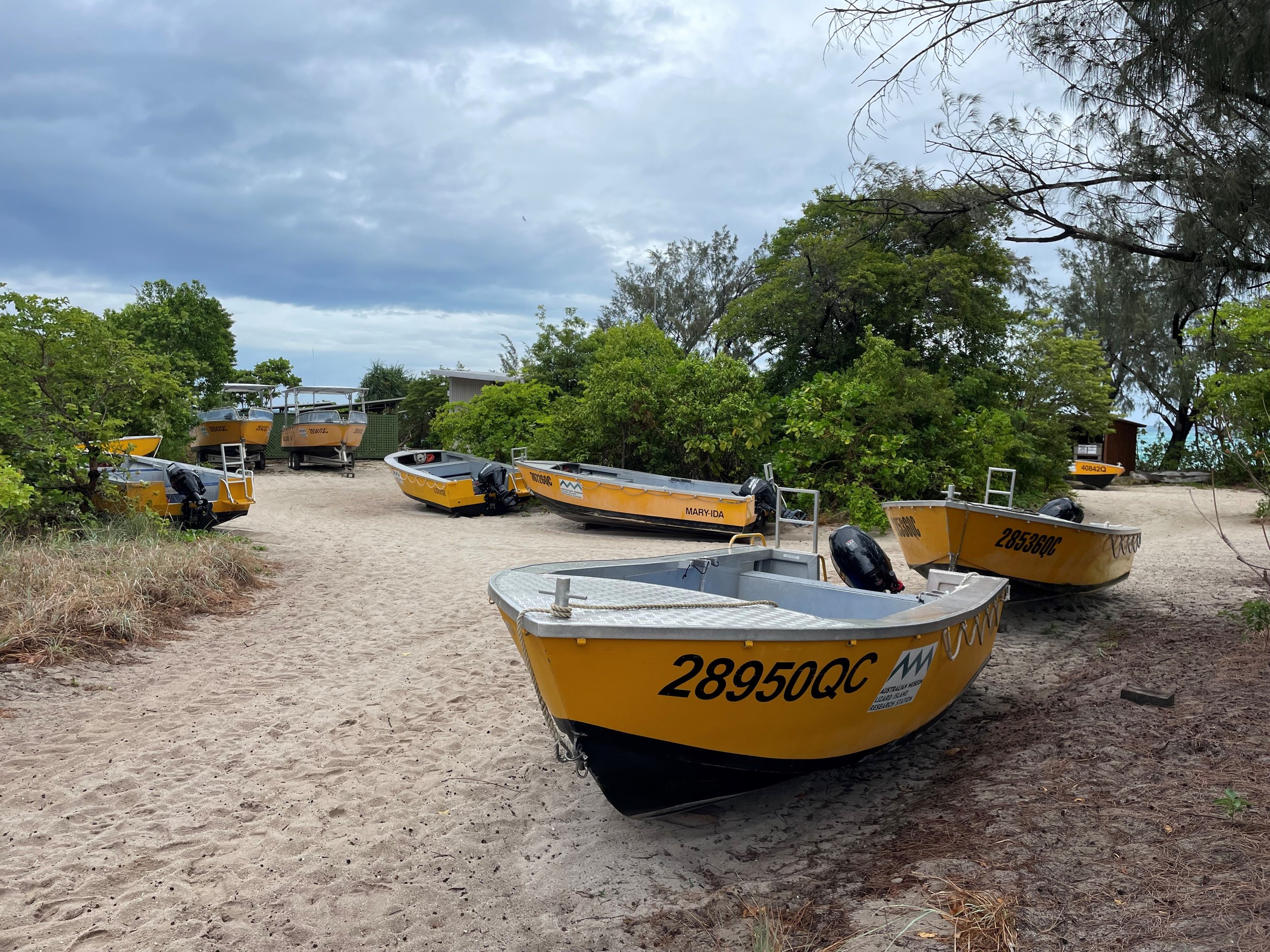

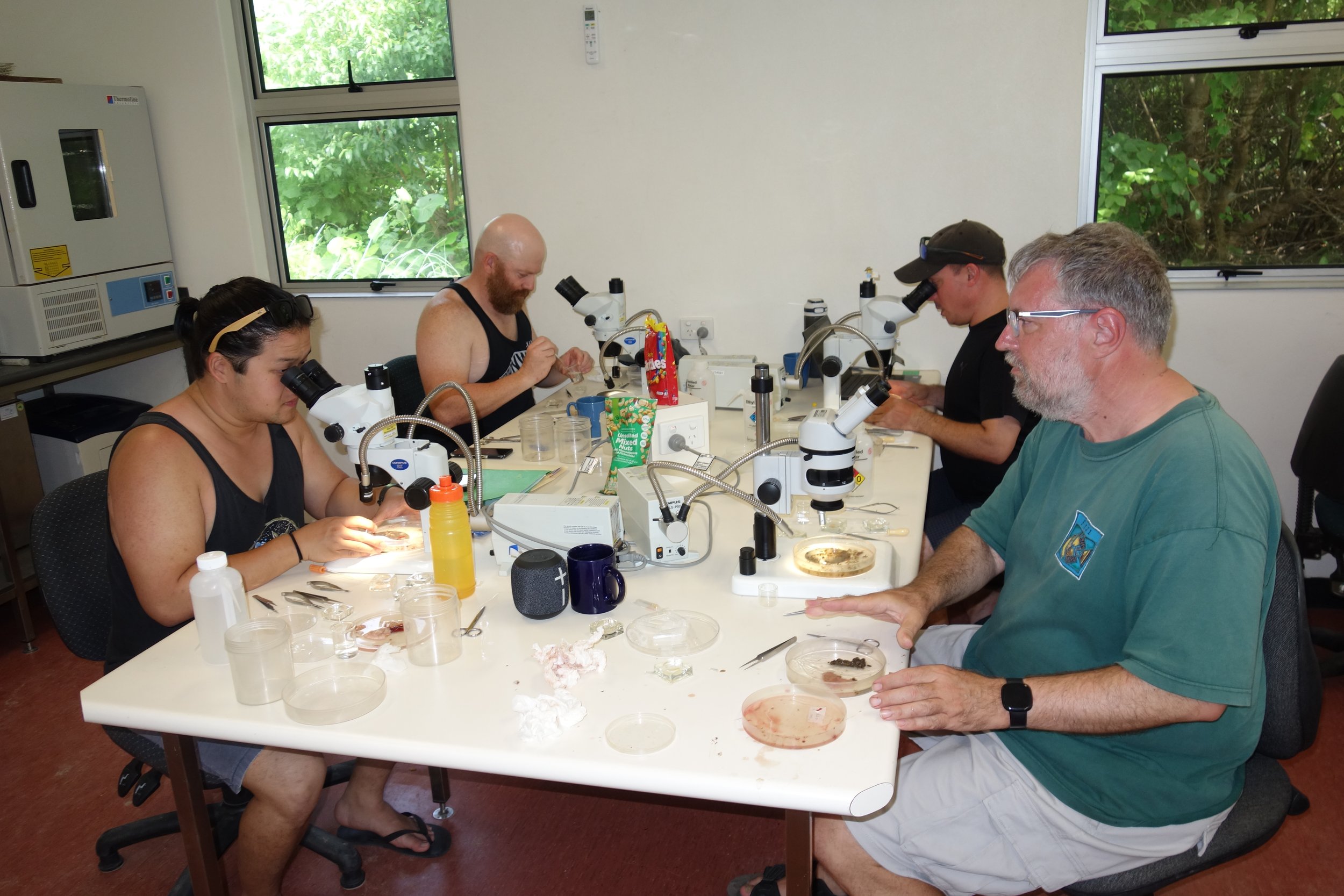
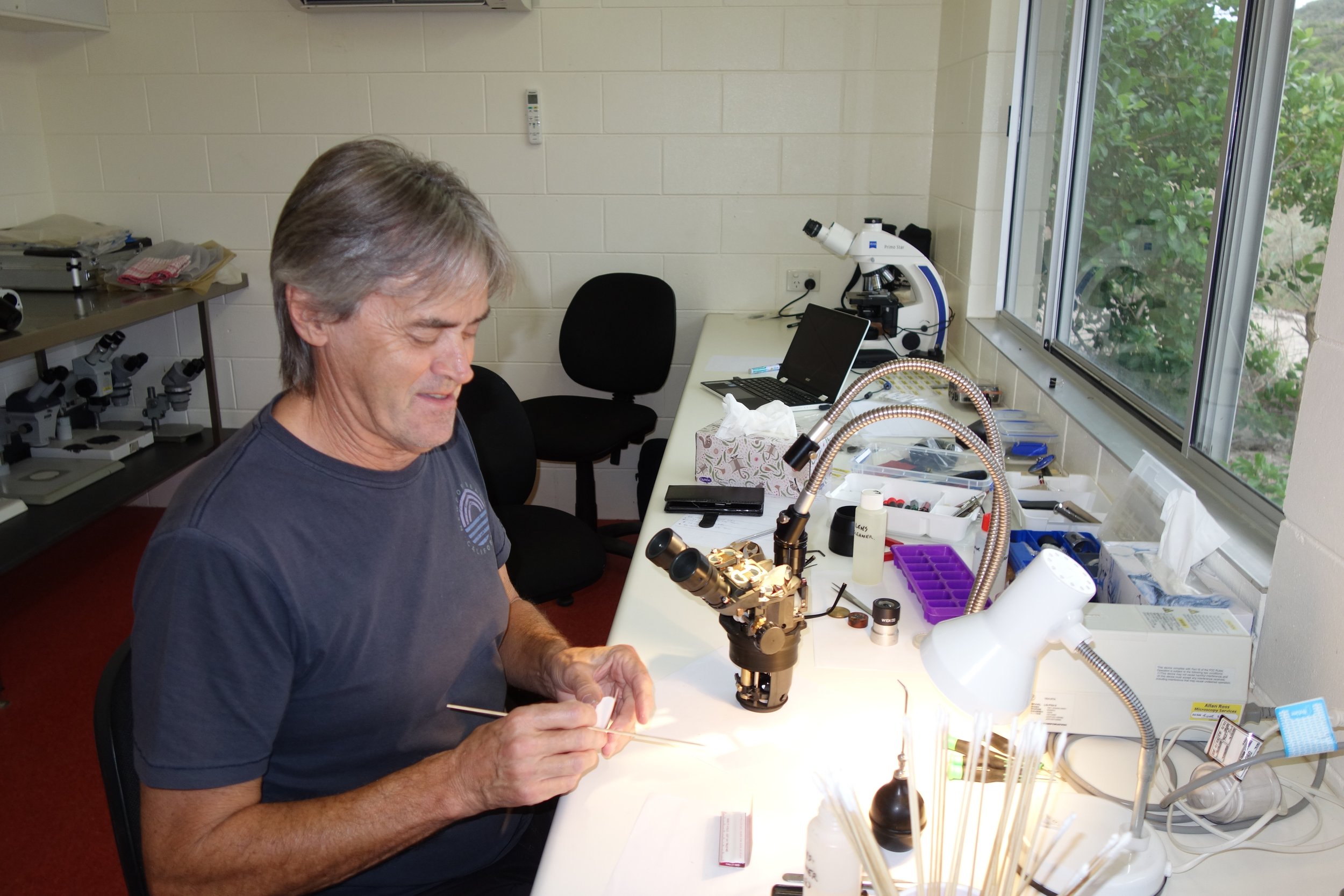
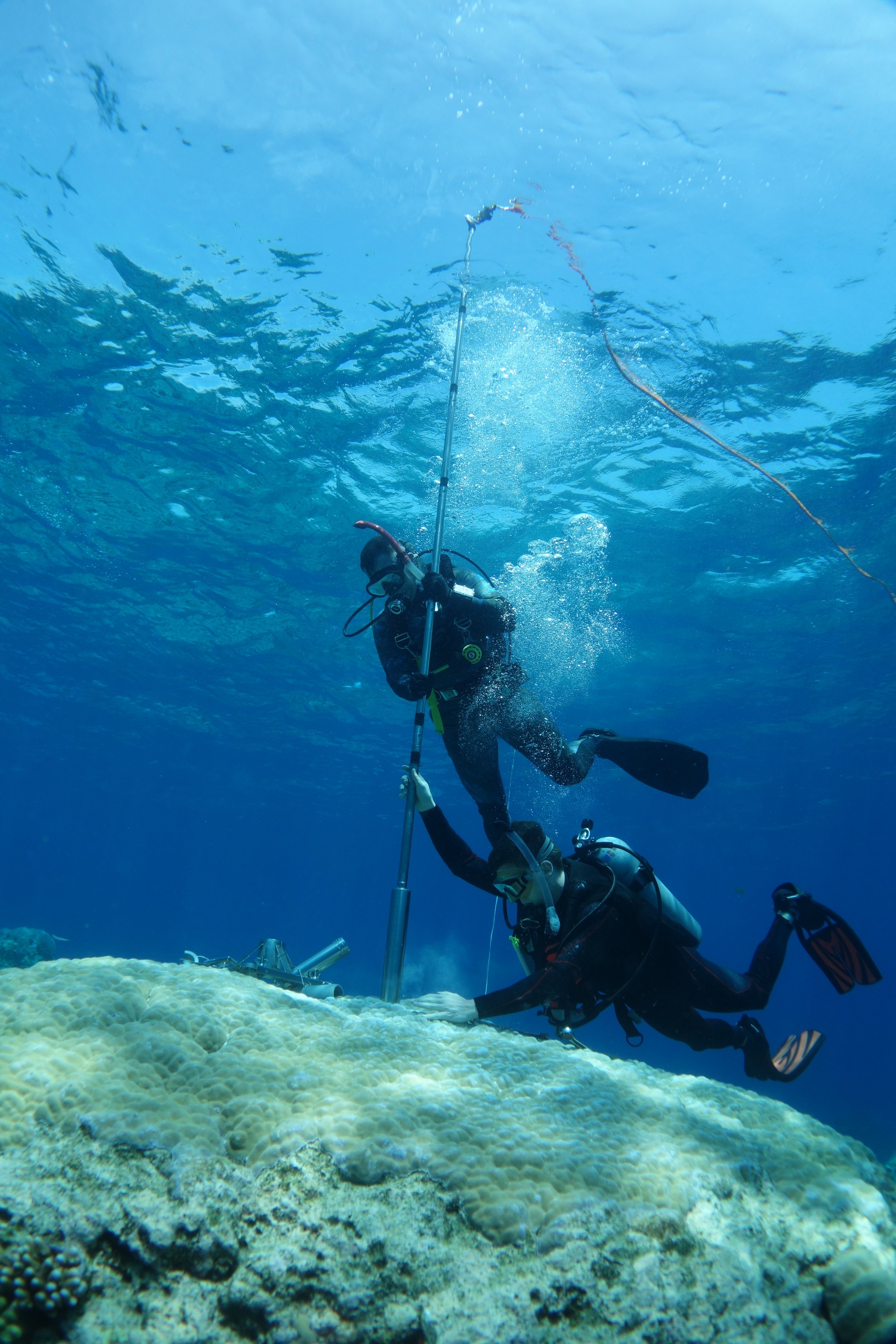
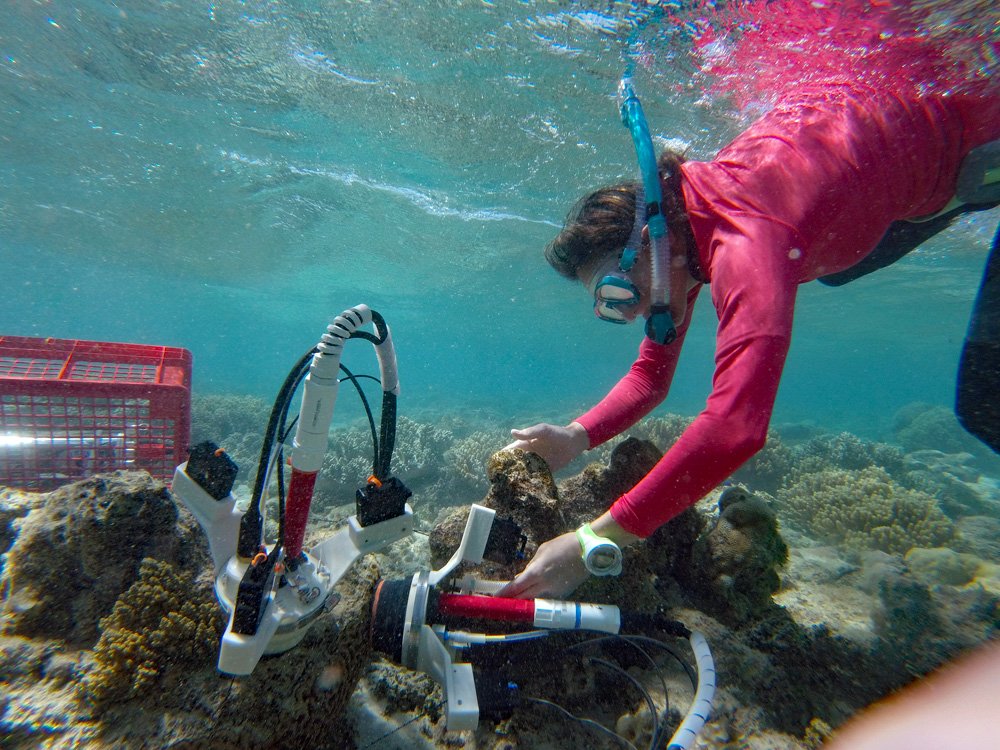
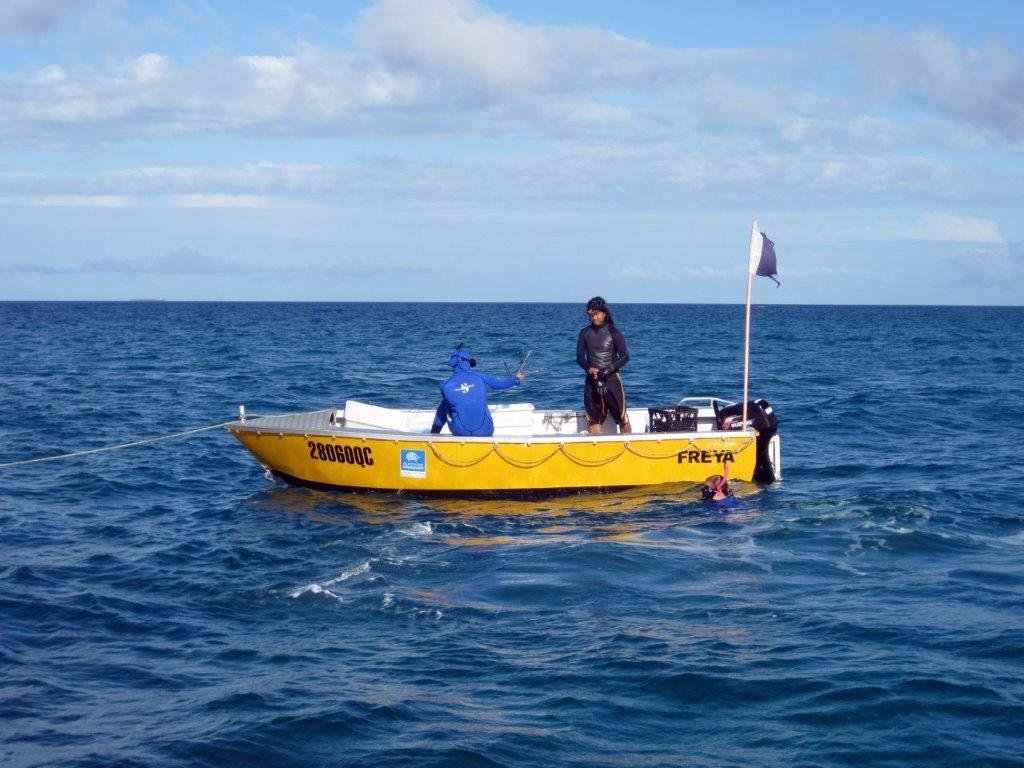
The Take 3 for the Sea's Surf Life Saving Club Program is a vital initiative dedicated to safeguarding coastal environments by raising awareness about marine debris and fostering a cleaner ocean ecosystem. Designed with flexibility in mind, the program collaborates with Surf Life Saving Clubs (SLSCs) across varying capacities, ensuring minimal pressure on volunteer members. For the 2023/24 season, clubs are encouraged to conduct three beach clean-ups and promote the Take 3 message within their communities.
The program offers comprehensive resources, including educational materials, safety guidelines, and a robust marketing kit, aiming to empower SLSCs as environmental stewards. With streamlined implementation and an emphasis on community engagement, this initiative not only addresses the pressing issue of plastic pollution but also strengthens the bond between SLSCs and their communities, making a profound impact on our marine environment.
January 2023: 44 clubs have registered out of 314 Australia-wide.
Clubs registered are in NSW, QLD, TAS, SA, and WA
Key Aims:
Raising Awareness: Highlight the marine debris issue and its impacts.
Sustainability Education: Equip SLSCs with waste reduction knowledge.
Community Engagement: Increase participation in Take 3 activities.
Streamlined Implementation: Offer an efficient program requiring minimal resources.
Environmental Stewardship: Position SLSCs as environmental leaders.
Resources Provided:
Guides on organizing clean-ups and safety briefings.
Educational content on plastic pollution.
Additional activity suggestions and resources.
Online support, training, and webinars.
Marketing kit with logos, social media content, and posters.
Regular newsletters with updates and resources.
Girringun developed Australia’s first Traditional Use of Marine Resources Agreement in the Great Barrier Reef Marine Park and now manages an Indigenous Protected Area spanning 1.26 million hectares of land and sea. This includes parts of the Wet Tropics World Heritage Area, the Great Barrier Reef and the Great Barrier Reef World Heritage Area. Girrungun’s work ensures that traditional management practices and knowledge are both recognised and incorporated strategically and on-ground to help keep Country and culture healthy and strong across their nine Traditional Owner groups.
The Sapphire funding has enabled Girringun to run a Junior Rangers program for school-age children spanning the geography of 9 different Traditional Owner groups along the Queensland coast. This program built a localised cultural curriculum for indigenous and non-indigenous kids to engage in caring for Country. The rangers play a key role in the preservation of traditional ecological knowledge, maintaining significant cultural heritage sites like the Great Barrier Reef, participating in research activities and raising the profile of Aboriginal natural and cultural resource management in the area through community liaison.
“We are the first generation to feel the effects of climate change, and the last generation who can do something about it.”
Barack Obama







